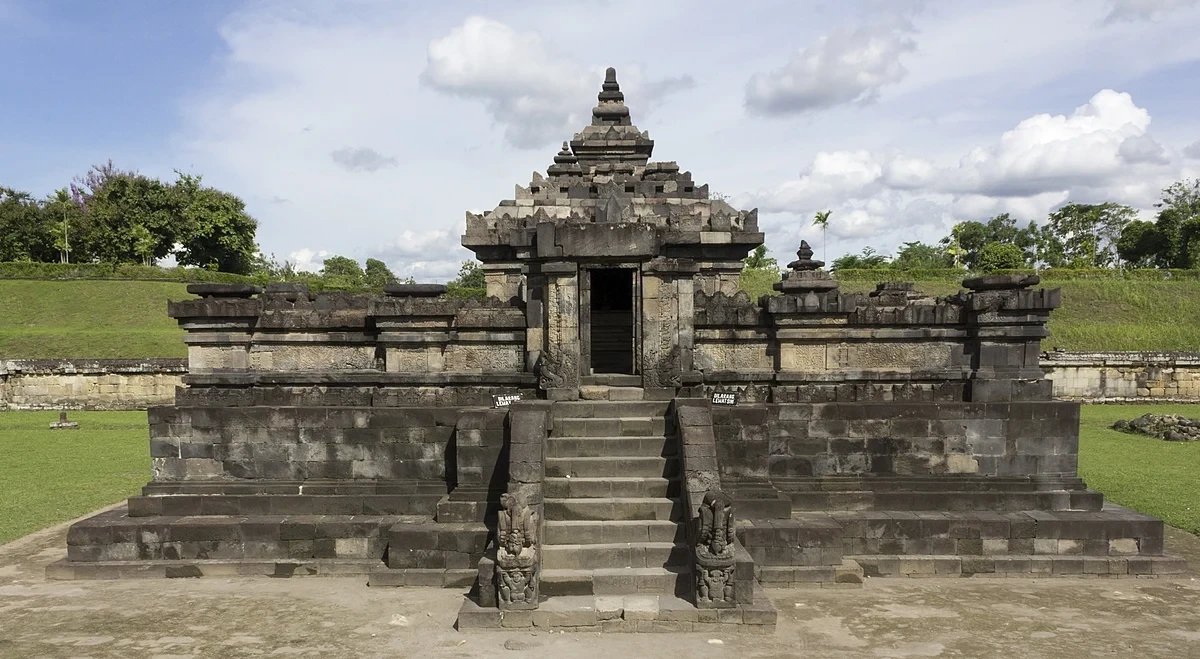Trevminusantara – Sambisari Temple: The Sunken Temple of Java, is a truly captivating archaeological site. This hidden gem, located near Yogyakarta, offers a unique glimpse into Java’s rich history. Its unusual subterranean location adds to its mystique, drawing visitors from around the world.
Unlike many other prominent temples in Java, Sambisari is largely unknown. This makes exploring it all the more exciting. Imagine uncovering a secret, a hidden treasure from a forgotten era! The experience is unforgettable.
The temple’s unique sunken position intrigues many. It’s a testament to the ingenuity of its builders. The mystery surrounding its construction only adds to its allure and makes you want to know more about its past.
The History and Discovery of Sambisari
The exact date of Sambisari’s construction remains debated. Scholars believe it dates back to the late 8th or early 9th century. This places it within the powerful Mataram Kingdom period, a time of great architectural innovation in Java.
Baca juga: Prambanan Temple: A Majestic Hindu Sanctuary
Remarkably, the temple remained hidden for centuries, buried beneath the earth. It wasn’t rediscovered until 1966, during land clearing operations. The accidental unearthing of this hidden marvel is a fascinating story in itself.
The excavation process was extensive and meticulous. Archaeologists carefully uncovered layer upon layer of earth and debris to reveal the stunning structure. The incredible preservation of some of the carvings and architecture speaks volumes about the skill of those who worked on the excavation. This painstaking effort brought this sunken wonder into modern light.
The Architecture and Design of Sambisari Temple
Sambisari’s architecture showcases a unique blend of Hindu influences. The temple features intricate carvings and a layout typical of Hindu temples of the era. You can see the dedication to detail and craftsmanship clearly.
Baca juga: Exploring Borobudur: A Monument of Buddhist Heritage
The sunken location is unusual. Many theories exist but the reason remains largely speculative. The intriguing design prompts further study and discussion amongst scholars and researchers.
Unlike many above-ground temples, the relative obscurity of Sambisari protected it from significant damage over time. This allows you to appreciate its remarkable state of preservation. It’s a treasure to behold.
Visiting Sambisari Temple: A Traveler’s Guide
Planning a trip to Sambisari is relatively straightforward. The temple is accessible and well-maintained. You’ll find it near Yogyakarta, easily reachable by car or local transport.
Baca juga: Selogriyo Temple: A Serene Escape in Java’s Heart
Remember to dress respectfully. Modest clothing is appropriate when visiting religious sites. Showing respect for the culture and heritage is a must, and it greatly enhances your appreciation of the temple.
Allow ample time for exploration. The temple and its surrounding grounds provide a serene and reflective atmosphere. Take your time to soak in the atmosphere and appreciate this beautiful historical site. Take many pictures!
Conclusion
Sambisari Temple stands as a testament to Java’s rich history and architectural prowess. Its unique sunken location and captivating story make it a must-see destination for any traveler exploring Indonesia. From its mysterious origins to its stunning architecture, Sambisari offers a truly unforgettable experience. I hope you’ve enjoyed this exploration of this incredible temple.
To further enhance your Indonesian travel planning, visit Trevminusantara for expert advice and customized travel itineraries.



